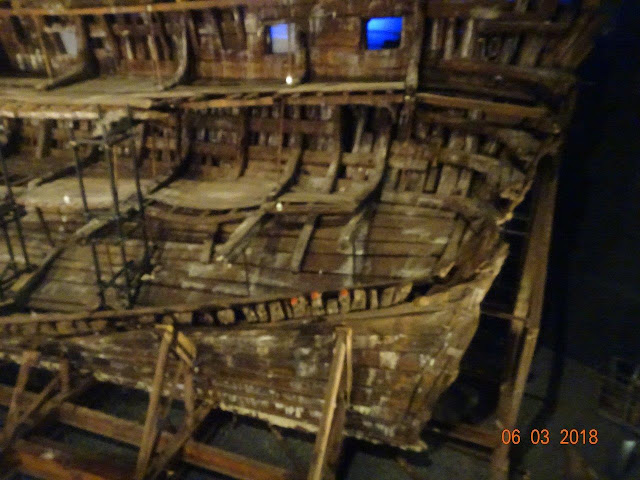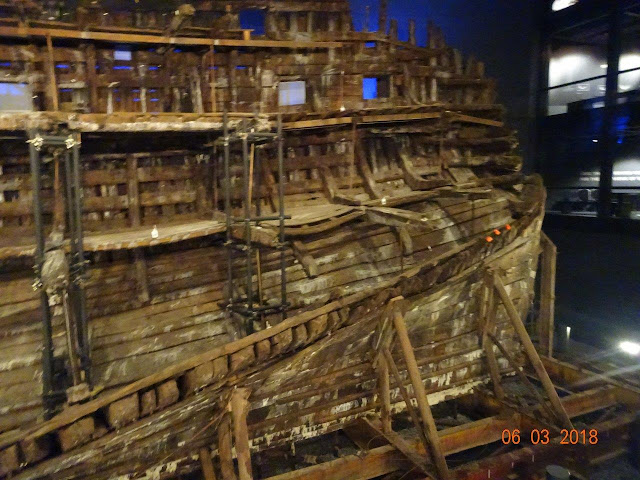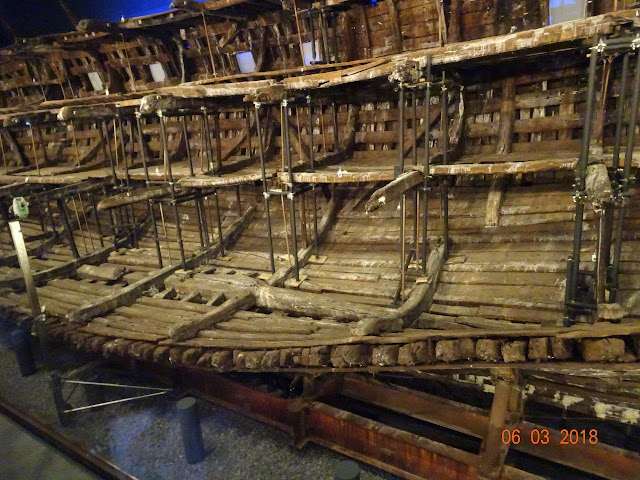Not only was this a very large and tall ship, but it had had several modifications. One was cutting additional gunports in the lower decks to add more guns. Another was besides their usual crew of 200 sailors and other ship's personnel, at the time it capsized and sunk, it had taken on an additional 180+ archers and their gear on their way to battle. There is also a possibility that the topmost deck in the rear had been added after the ship was originally constructed. So, basically, it was top heavy, overloaded, and had holes cut in the side close to the water line--a perfect storm!
And to make matters worse for its crew and passengers, the rope boarding netting had been strung on her decks, so the only survivors were those on the rigging at the time of the sinking.
When he became king, Henry VIII commissioned several warships as a way to strengthen his navy. One of these was the Mary Rose.
Here is a summary of the life of this ship:
The ship's bell.
Henry VIII's Tudor Rose was fastened to the bow of the ship and survives here. You can just recognize the rose shape on the left.
A cannon from the ship. On the top near the opening of the barrel, there is a Tudor rose stamped into the metal, but I was unable to get a good angle to take a photo, but you can see a side view here.
Only the half of the ship that had been covered in river much survived. And even then, large parts are forever missing. This diagram shows what it looked like 500 years ago. And here is a very good article on why it sunk and how it was retrieved: https://www.thehistorypress.co.uk/articles/the-sinking-and-raising-of-the-mary-rose/
The location of the wreck of this ship was discovered in 1982, but it took many years to preserve it and get it ready for display. The ship is mostly behind glass with viewing on three levels and exhibits at each end. The purpose of the glass is to keep temperature and humidity at the proper levels to maintain this very, very old wood. This is the rear of the ship.
My camera takes very good photos in the dark, but you have to hold it very still, which was hard to do. Plus, the lights that came on briefly every few minutes caused streaks and flashes. Only the half of the ship that was submerged was recoverable, so imagine another half of the ship to match this one.
A display of one of the cannons removed from the wreck. Note the age of the wood.
Also, I had to take photos behind glass, so there are reflections, but this is still an amazing ship.
The bow of the ship is missing, but this is where it would have been. Can you believe they lifted this ship up in one piece? Divers had to dig under the hull to slide the platform in to support it while being raised.
All of the artifacts displayed were recovered from the ship. Most were in cabins for officers that collapsed, but remained protected.
A little fuzzy, but these were the shoes of the master carpenter.
Many items were preserved because they were in locked chests.
This is a leather jerkin or shirt.
More views of the ship from a higher level.
Note the detail in the bottom of the hull here. It was a double-hull with beams between the two layers. Also, you can tell how rounded the hull of the ship was, which no doubt also made it easier to roll over and sink.
You can see how flat the bottom of the hull was in this photo also.
A last display is two of the earliest compasses known.
The ship looks small in this model, but the real thing is a lot more impressive!






































No comments:
Post a Comment